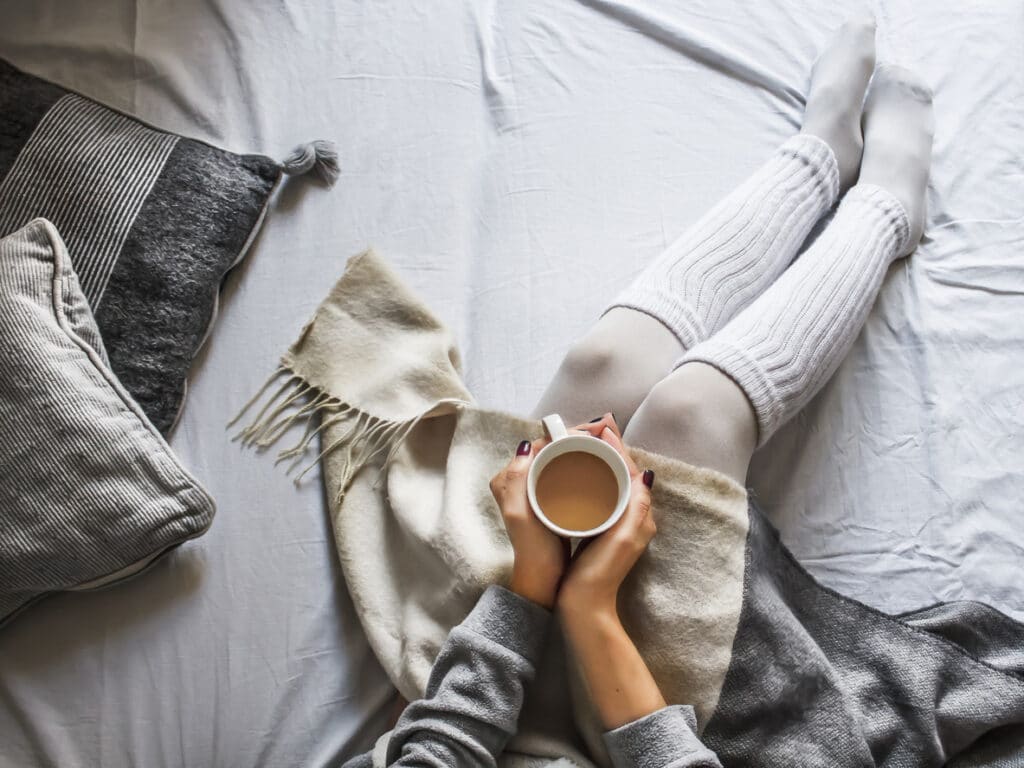Compression socks are a great way to help your body recover from long days at work. You should be wearing them during the day, but should you sleep in them? The answer is not so simple! There are some things that you should know about compression socks before deciding whether or not they should go on your feet while you’re sleeping.

Benefits of wearing compression socks
Proponents of wearing compression socks say that the mild pressure they place on your legs helps to remove swelling and promote comfort. It is even said that wearing compression stockings can help you combat restless leg syndrome.
Can you sleep in compression socks for restless legs?
Wearing compression socks is an effective way to treat restless leg syndrome. The socks apply gentle, graduated pressure to the legs, which relaxes the muscles and decreases swelling. Compression socks also improve circulation by promoting blood flow throughout the lower body. This increased circulation helps to oxygenate the legs and prevents blood from pooling in the extremities. As a result, patients who wear compression socks often experience improved sleep quality. In addition to providing relief from symptoms, compression socks are a convenient treatment option for restless leg syndrome.
In order to safely wear compression socks to relieve restless leg syndrome, always use graduated compression socks.
Should you sleep in compression socks?
The short answer is no, you should not sleep in compression socks unless you have been medically advised to do so. However, you can wear graduated compression socks which are tighter around the feet and ankles and which are then looser around your calves.
Why you should take your compression socks off at night
If you are thinking about wearing compression socks to bed, there are three things you should know before you do so:
1 Wearing compression socks at night can block blood flow to your feet
When you are wearing your compression socks normally, either sitting or standing, the compression stocking is working against the natural gravity of your body and your blood is able to flow down into your feet despite the compression.
However, at night, this gravitational factor is removed and the tightness of the compression socks can actually prevent the blood flowing properly into your feat. This can eventually lead to problems such as tingling sensations or numness in your toes (parathesia).
2 Compression socks overnight can cause blood clots and varicose veins
If you wear compression socks overnight without a medical reason for doing so then it can increase your risk of developing deep vein thrombosis.
Even if this serious complication is avoided, wearing compression socks for long periods of time (more than 12 hours at once) can worsen varicose veins.
3 Compression socks are ineffective at night
Compression socks are useful to increase blood flow and prevent swelling when you are sitting and standing. Simply put, for regular wearers (those without a medical reason for doing so), compression socks are not effective at night. Where your medical professional recommends you wear your compression socks over night there will be a medical reason for doing so (such as avoiding complications after surgery).
Read also: Is it good to sleep without underwear?
How many hours should you wear compression socks?
Compression socks should generally only be worn for up to 12 hours at a time, unless advised otherwise by a medical professional.
Can you take a nap with compression socks on?
If you happen to fall asleep with your compression socks on every once in a while this is unlikely to do you any harm and you shouldn’t worry about it.
Conclusion: Should you sleep in compression socks?
The short answer is no, you should not sleep in compression socks unless you have been medically advised to do so. However, you can wear graduated compression socks which are tighter around the feet and ankles and which are then looser around your calves.
